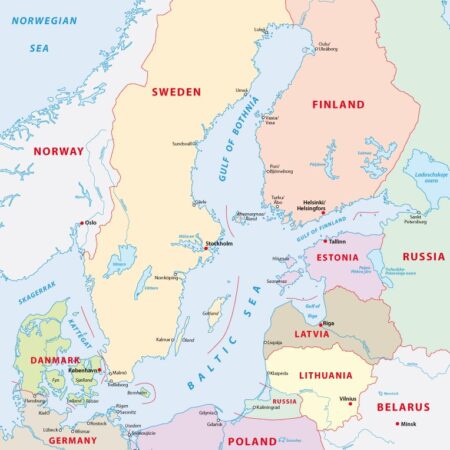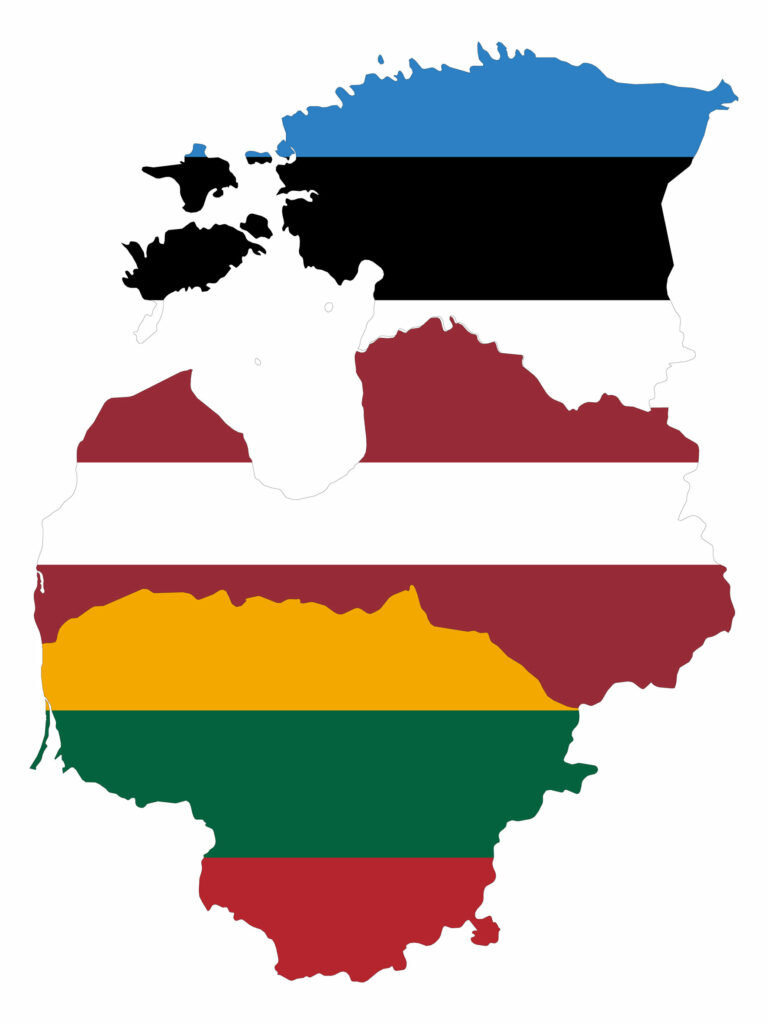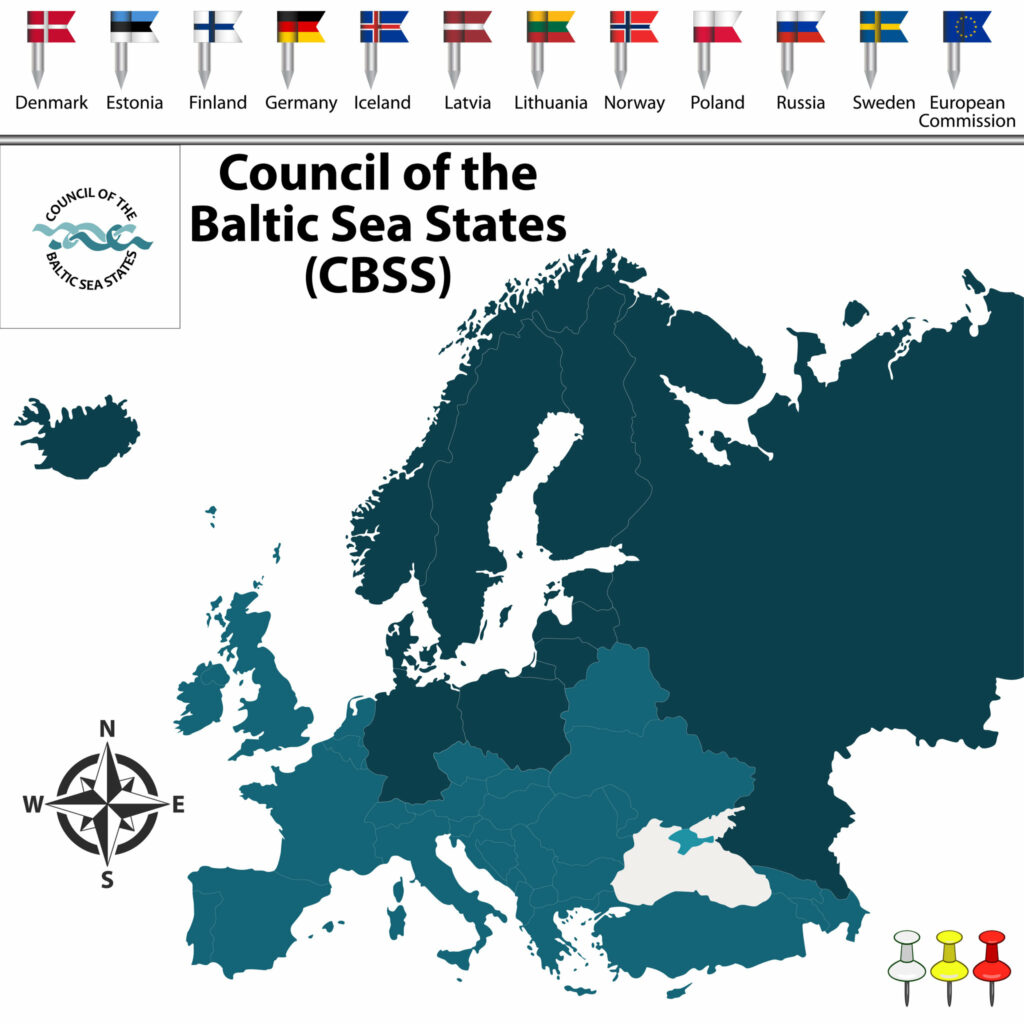Which Countries are the Baltic Nations?
Estonia, Latvia, and Lithuania, located on the Eastern shore of the Baltic Sea, are the Baltic Nations.

When Did The Baltic States Form?
The Baltic states map began to come together after World War 1. The term “Baltic” was given to the countries on the Baltic Sea that were now independent of the dominance of the Russian Empire. In other words, Baltic nations were once under Russian rule but are now individual sovereign countries.

The Treaty of Tartu was a peace treaty that recognized the independence of Estonia and Latvia from Russian rule. Estonia and Soviet Russia signed this treaty on October 2nd, 1920. The Republic of Latvia was also recognized as an independent country by the Treaty of Riga, signed on March 18th, 1921, by Poland and Soviet Russia.
Lithuania
Officially called the Republic of Lithuania, the Baltic State is home to over two million people. Lithuania is the largest country in the Baltic region, and its economy is the most diverse of the three. Lithuania has a GDP per capita of over $20,000 and ranks as a high-income economy. The country’s largest export is petroleum products. However, this country also exports wood, textiles, and food products.
Vilnius is the capital of Lithuania, and it has a population of over 548,000 people.
Estonia
The Republic of Estonia is the smallest country in the Baltic region by population, with only 1.3 million people living there. Estonia has a GDP per capita of over $23,000 and is considered a high-income economy. Its main exports are machinery, wood products, and furniture.
Tallinn is the capital city of Estonia, with an estimated population of over 445,000 people.
Latvia
Officially known as the Republic of Latvia, the Baltic State is home to over two million people. Latvia has a GDP per capita of slightly over $11,000 and ranks as an upper-middle-income economy. One of the country’s largest exports is machinery and electrical equipment.
Riga is the capital of Latvia, and it has a population of over 710,000 people.
What Is The Geography of The Baltic Nations?
When you look at the Baltic Nations map, you will notice the 3 nations have a larger border with the Baltic Sea and Russia. Poland and Belarus border them in the southwest. The people in these nations also share a common history.
The Baltic area contains over 7,000 lakes and ⅓ of the region has forests. The coastline is mostly sandy, with cliffs in the north and dunes in the south. The land of the Baltic Nation is very flat and contains mostly marshland, with forests that cover a large portion of the land.
As you can see from this Baltic Nations map, each country has a border with Russia in the North. The only Nordic country included on this map is Finland, which borders Estonia and partially Norway. Poland borders Latvia and Lithuania in the Southwest, and Belarus is the only country bordering all three Baltic nations.
What Type of Government Do Baltic Nations Have?
After the Soviet Union dissolved in 1991, the Baltic nations became republics. As republics, their representatives are elected with the prime minister as head of state and government. The legislative branch makes up the parliament, which consists of 101 members in Estonia, 100 members in Latvia, and 141 members in Lithuania.
Are Baltic Countries Part Of The EU?
The three main Baltic nations, Latvia, Estonia, and Lithuania are all members of the European Union, the OECD, and NATO. The countries joined the European Union in 2004.
As a result, the currency of Estonia, Latvia, and Lithuania are the Euro. Estonia joined the Euro in 2011, Latvia in 2014, and Lithuania in 2015.
What Languages are Spoken?
Despite previous rule by Russia, each Baltic Nation still speaks its own native language – Estonian, Latvian, and Lithuanian. Estonian, Latvian, and Lithuanian are Indo-European languages that are in the same language family as Russian.
Russian is also frequently spoken due to the high percentage of Russian speakers living in the Baltics. English is also becoming more common, especially in cities.
What Religion Do Baltic Nations Follow?
Primary denominations are Orthodox (Estonia), Lutheranism (Latvia), and Catholicism (Lithuania). However, other religions are represented including Islam and Judaism.
What is the Climate of a Baltic Nation?
The climate of a Baltic nation is temperate with cold winters and mild summers. The average temperature in January is -5 degrees Celsius, and the average temperature in July is 17 degrees Celsius. Precipitation is highest in the summer months.
What is the Flag of a Baltic Nation?
The flag of a Baltic nation is made up of three horizontal stripes where the top stripe is blue, the middle stripe is white, and the bottom stripe is red.

The flag of Estonia also has a coat of arms in the center. The flag of Latvia has a similar design, but the blue stripe is replaced with a green one. And finally, the flag of Lithuania has a green stripe on the top and bottom, with a white stripe in the middle.
Council of the Balkan Sea States
What is The Baltics Council?
The Council of the Baltic Sea States was established in Copenhagen, Denmark, in 1992.
The Council has 12 members: Estonia, Latvia, Lithuania, Denmark, Finland, Norway, Sweden, Iceland, Poland, Germany, Russia, and the European Commission.

Although Denmark, Norway, and Iceland do not have a coast to the Baltic Sea, they are among these countries because they are members of this council.
The Baltics Council, also known as the Council of the Baltic Sea States, is an intergovernmental organization that consists of 10 member states. These ten countries are Denmark, Estonia, Finland, Germany, Iceland, Latvia, Lithuania, Norway, Poland, and Sweden.
The Baltics Council was established in 1992 to promote cooperation among these countries in areas, including trade, culture, environment, and security. The headquarters are in Stockholm, Sweden.
Member states of the Baltics Council have a combined population of over 210 million people and account for almost 60% of the GDP of the European Union.
Image Sources and Copyright Information
- Baltic Sea Map with Surrounding Countries: © Rainer Lesniewski/Shutterstock